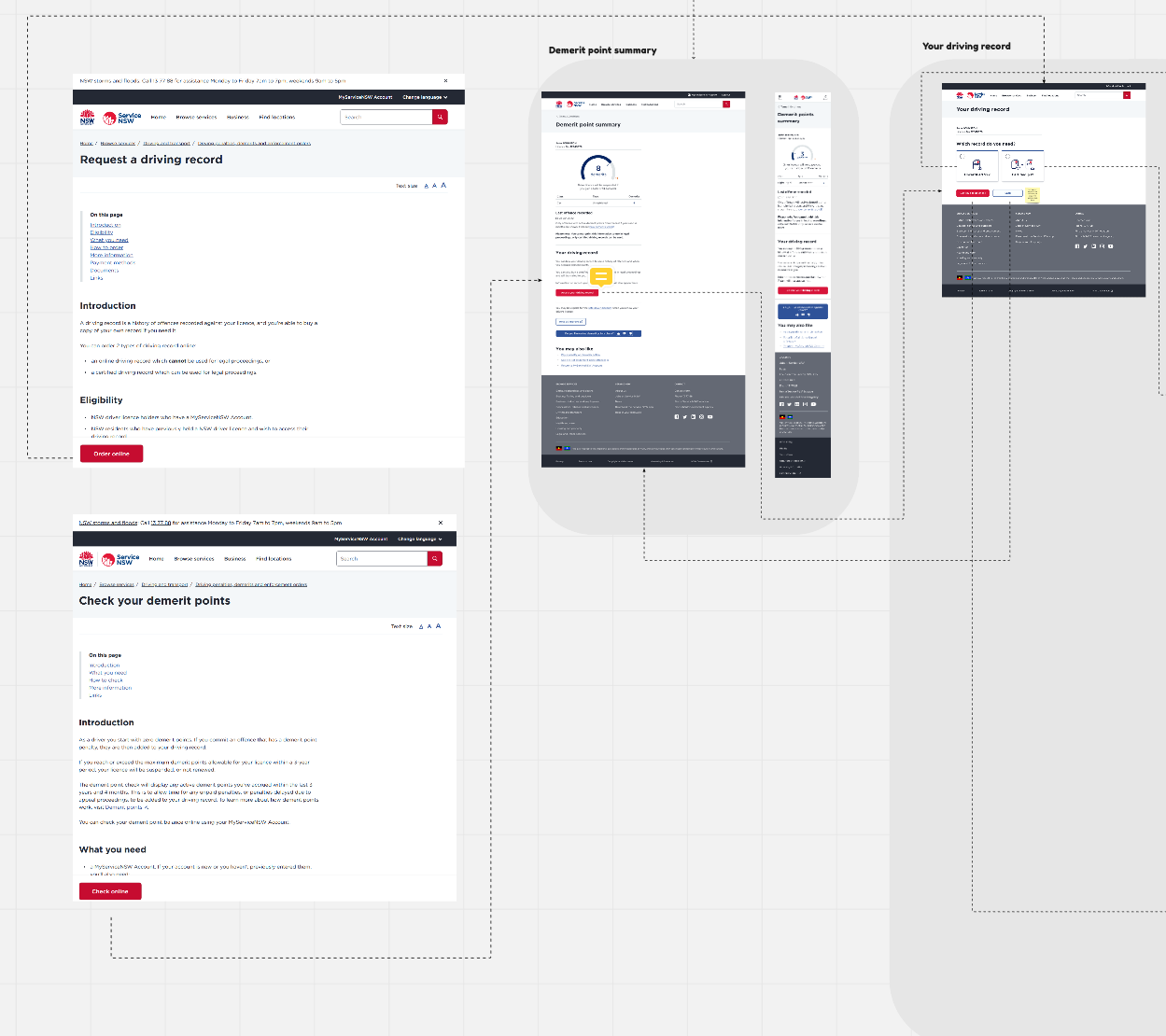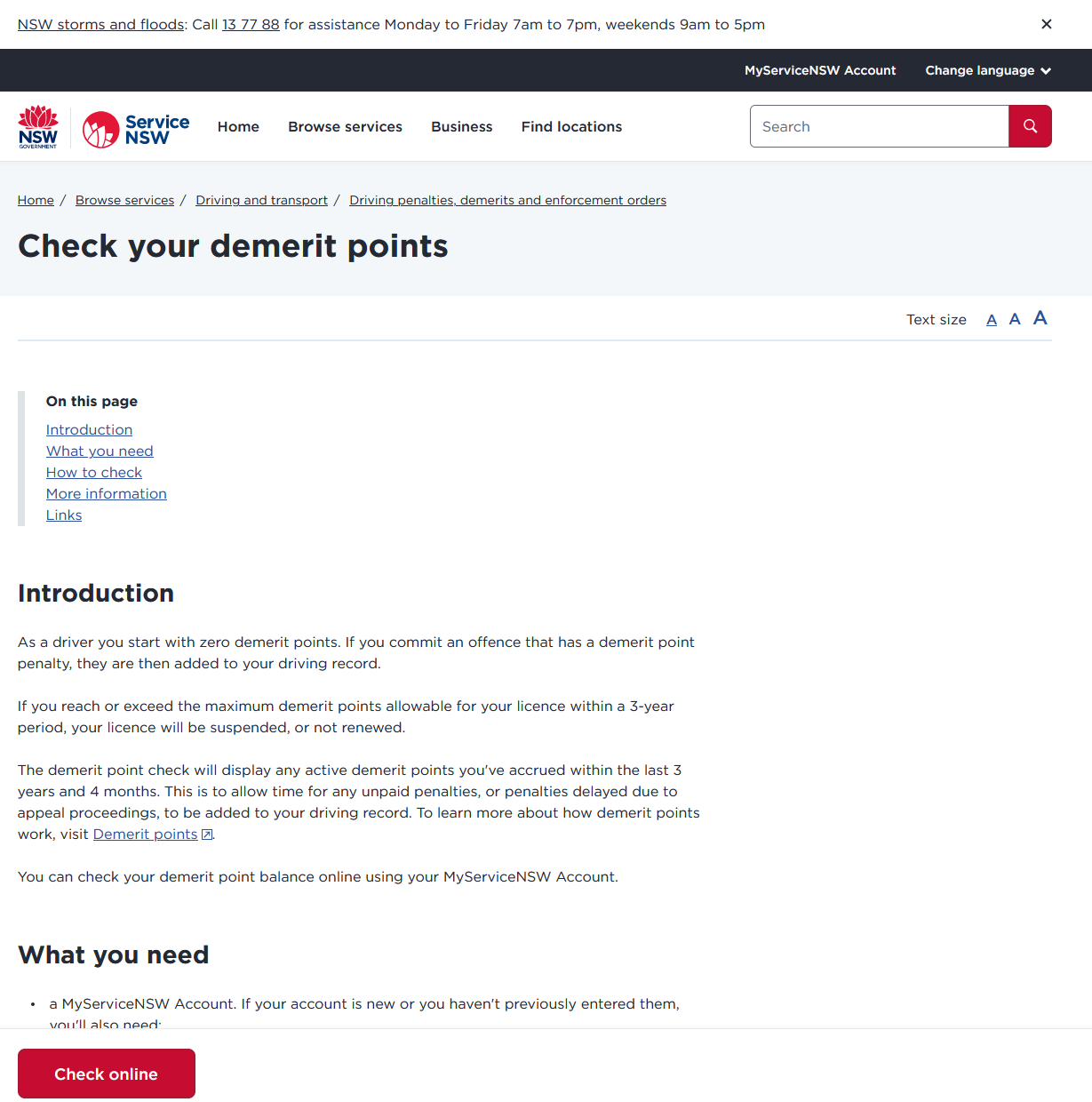Driving Records at ServiceNSW
June 27, 2022
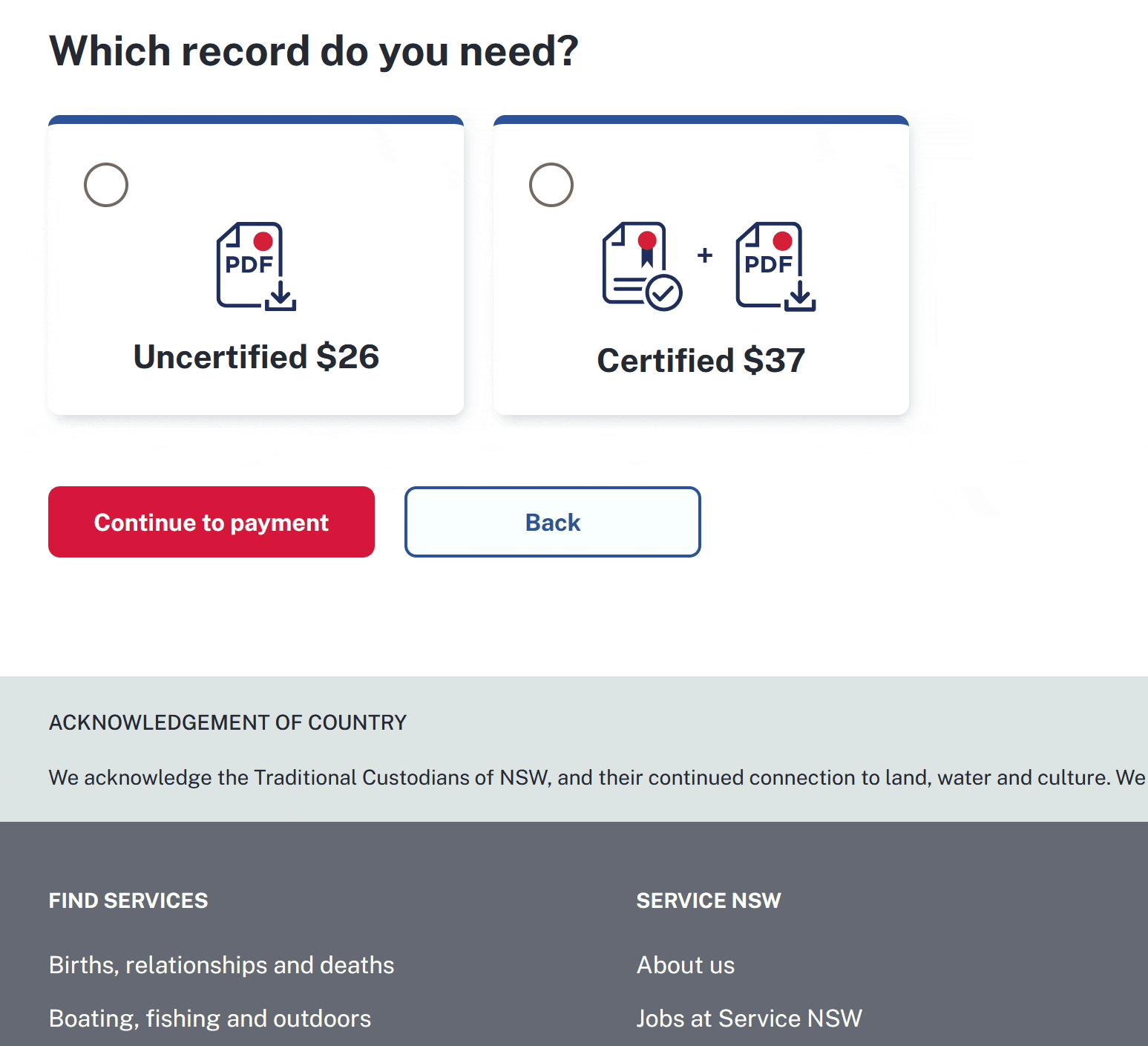
Overview
In 2022, I led the redesign of Service NSW's digital driving record system, a critical service allowing citizens to access their driving history for legal and personal purposes. The project aimed to simplify the process of obtaining driving records while maintaining strict compliance with government regulations.
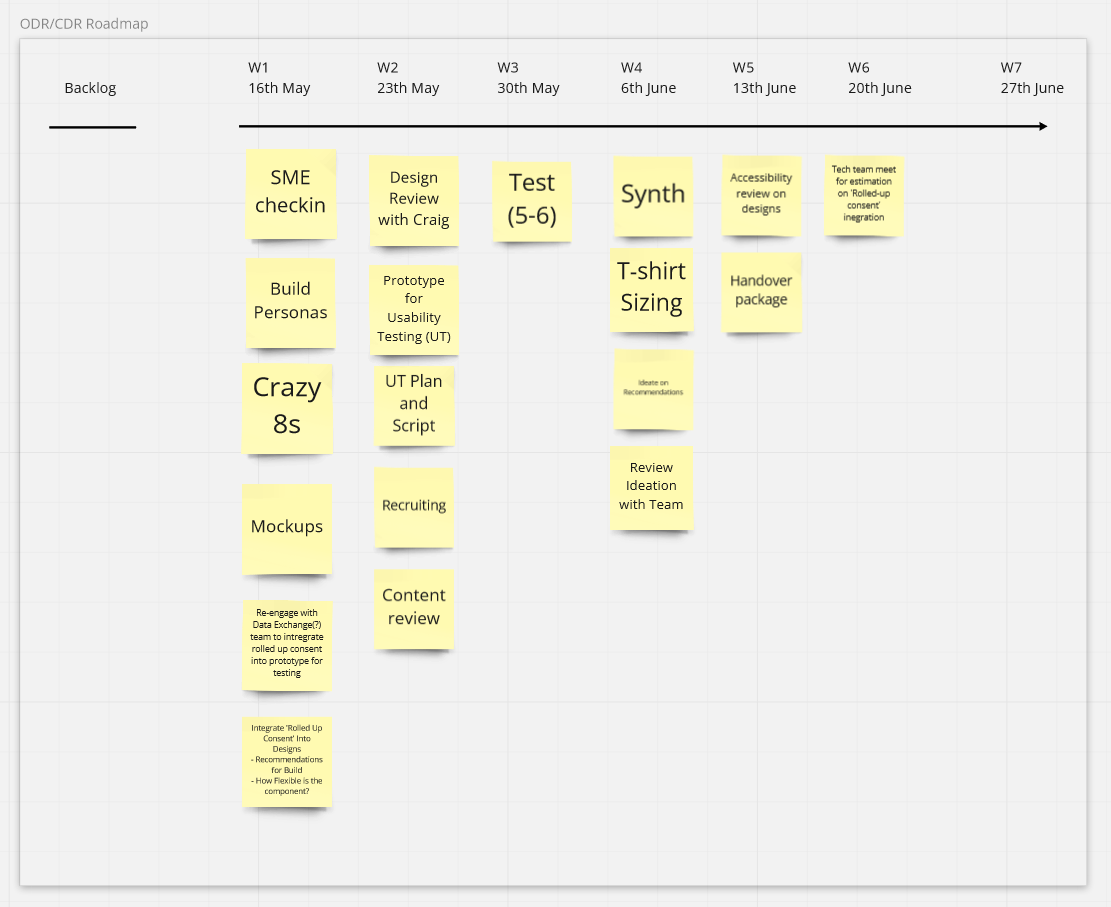
The Challenge
Users struggled to differentiate between certified and uncertified driving records, leading to purchase confusion and increased support calls. The existing interface lacked clear product information and relied heavily on technical terminology. Additionally, analytics tracking was limited, making it difficult to validate design decisions with quantitative data.

Discovery & Research
Given the analytics limitations, we adopted a hybrid research approach:
- Deep consultation with a senior Subject Matter Expert (SME) who had decades of frontline customer support experience
- Analysis of available customer feedback from the production system
- Review of historical customer support patterns
- Validation of insights through user testing






This approach revealed several key user needs:
- Clear distinction between certified and uncertified records
- Upfront pricing and processing time information
- Simplified explanation of when each record type is appropriate
- Better connection between license information and associated demerit points
Design Process
We structured our design process in several phases:
1. Ideation
- Conducted "Crazy 8s" workshops focusing on ideal user experiences without technical constraints
- Generated multiple concepts for presenting product differences
- Explored new component ideas for product comparison

2. Component Design
We identified the need for a new "radio card" component that would:
- Clearly display product differences
- Include visual hierarchy for pricing and processing times
- Incorporate iconography to aid quick comprehension



3. Technical Feasibility
Early informal discussions with developers seemed positive, but revealed a crucial lesson: casual alignment isn't enough. We needed:
- Formal technical review sessions
- Detailed component specifications
- Clear understanding of the development team's capacity and expertise
Validation
We conducted comparative testing between our new designs and previous versions, focusing on four key metrics:
- License information clarity
- Purchase process initiation
- Product differentiation understanding
- Post-purchase comprehension



Results showed that participants consistently preferred Design B, citing:
- Clearer product information
- More effective use of iconography
- Overall simplicity of the experience
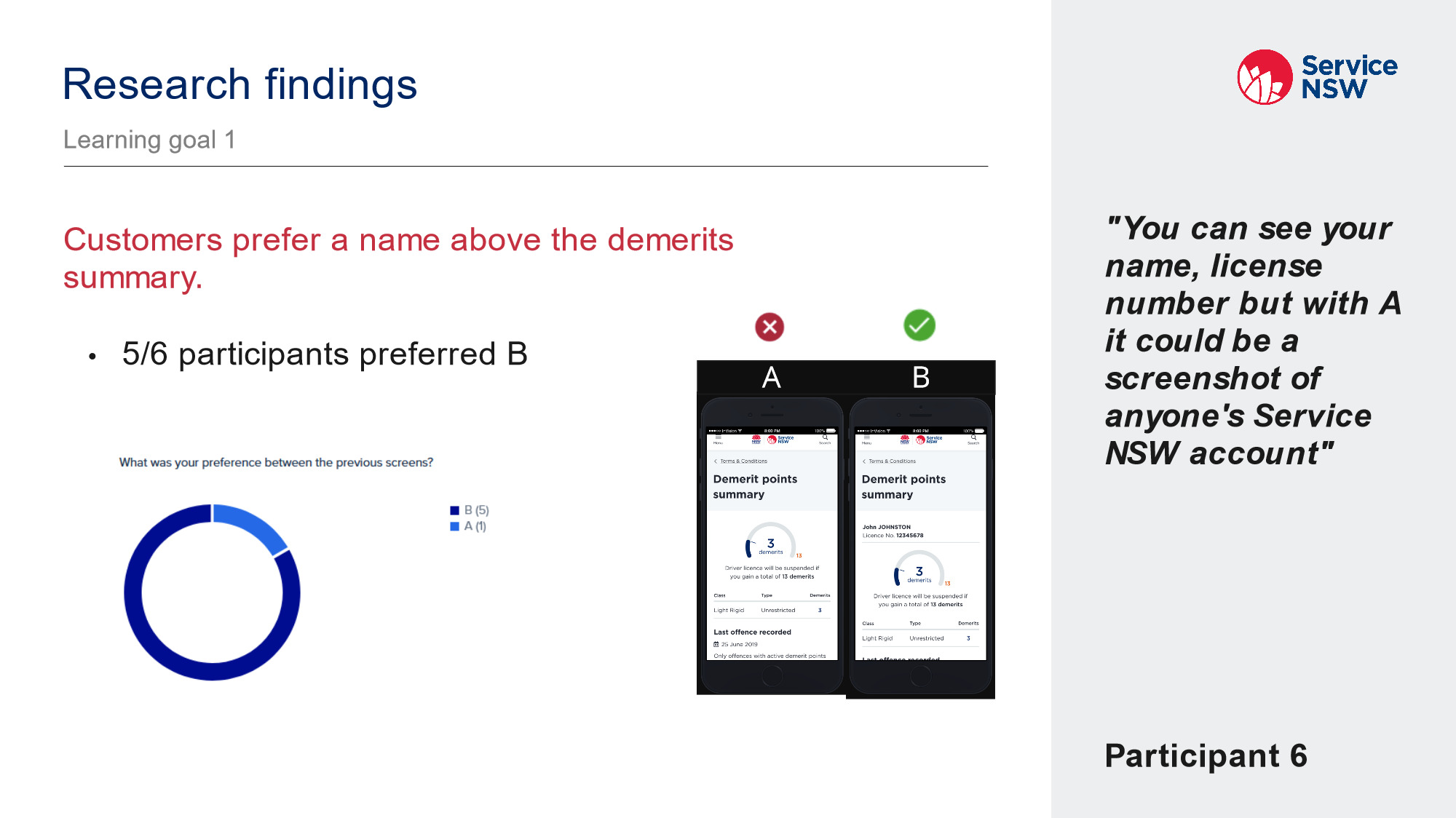



Implementation Challenges
The project revealed significant gaps in our process:
1. Technical Capacity
- Late discovery that the development team lacked expertise in creating new React components
- Limited support availability from the design system team
- Need for additional technical documentation and support
2. Solutions Implemented
- Created a working CSS prototype for developer reference
- Established one-on-one support sessions with engineers
- Developed detailed user journey maps for different scenarios
- Planned future contribution to the global design system
Results
While the initial implementation was successful, we identified several areas for improvement:
- Reducing clicks before arriving at the driving record transaction
- Feedback channel implementation was delayed to a future release
- Some technical debt was accrued due to component implementation compromises
Key Lesson: The Danger of Siloed Expertise
The most valuable lesson from this project wasn't about user interface design or research methodology – it was about the critical importance of breaking down disciplinary silos. When teams operate in isolation:
- Technical Feasibility becomes an afterthought rather than a design constraint
- Research can become self-validating rather than truly investigative
- Communication happens in formal presentations rather than ongoing collaboration
- Business Rules are treated as immutable rather than understood and challenged when appropriate
Success in product design requires more than just good design skills – it requires:
- Early and continuous cross-functional collaboration
- Honest assessment of team capabilities
- Clear communication channels between disciplines
- Shared ownership of both problems and solutions
- Willingness to challenge assumptions while respecting constraints
The driving record project demonstrated that even when individual elements of the design process are strong, siloed execution can lead to implementation challenges and missed opportunities for innovation. True success comes from breaking down these silos and creating an environment where different disciplines work together from day one, sharing their constraints, capabilities, and insights to create truly integrated solutions.
Final Designs
